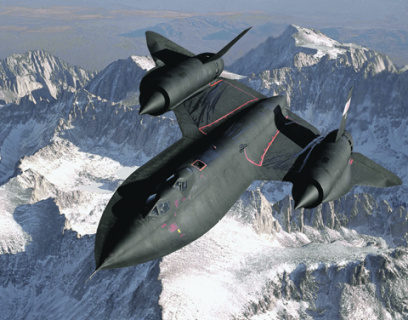TNI: The USA has created a super-high-speed SR-71 Blackbird aircraft from Soviet titanium
During the Cold War, the United States managed, through shell companies, to purchase from the USSR the necessary amount of refractory titanium to create a secret reconnaissance aircraft, writes TNI. This machine still surpasses American fifth-generation fighters in terms of its speed characteristics.
Titanium, capable of withstanding the hellish temperatures that occur at a flight speed of over three Mach, has become the ideal solution for the SR-71 Blackbird spy plane.
The American F-35 Lightning II and the Chinese Chengdu J-20 are now generally recognized fifth-generation fighters. But they are significantly faster than an aircraft created more than half a century ago. The SR-71 Blackbird is perhaps the most formidable machine of the Cold War.
This strategic high-altitude long-range reconnaissance aircraft was developed at the Lockheed Martin think tank. It had a speed of over three Mach (three times the speed of sound). For comparison, the F-22 Raptor can reach a speed of Mach 2.25. This is impressive, but this car is not nearly as fast as its predecessor.
The Blackbird possessed not only unsurpassed speed. It was easily recognizable due to its unique appearance, including the black titanium case. This is very unexpected, but the United States should be grateful to the Soviet Union for this component.
A brief history of the SR-71 Blackbird
In the 1950s, the CIA asked Lockheed Martin to create an aircraft capable of operating unnoticed in Soviet airspace. When the U-2 spy plane was shot down by a Soviet air defense anti-aircraft missile in 1960, the CIA's order gained special significance. The United States needed a machine that surpassed all Soviet interceptor aircraft and missiles in speed. The basis for the design of the Blackbird was the Lockheed A-12 reconnaissance aircraft.
The design of the A-12 was very unusual, but it allowed it to develop a very high speed, which was what it was remarkable for. But despite its speed, the A-12 had one fatal flaw. The aluminum airframe of the aircraft could not withstand the enormous temperatures that arise when flying at such a colossal speed. To solve the friction problem, American engineers turned to titanium.
How did the Soviet titan get to America?
Titanium, capable of withstanding the hellish temperatures that occur at a flight speed of over three Mach, has become the ideal solution for the SR-71 Blackbird spy plane. The only problem was that during the Cold War, the Soviet Union was the largest supplier of titanium to the world market. To overcome this rather significant obstacle, the United States took advantage of third world countries and fake companies that purchased titanium in the necessary quantities to create SR-71 airframes.
The famous pilot of the Blackbird, Colonel Rich Graham, told: "This plane was 92 percent titanium inside and out. When it was created, the United States did not have its own deposits of titanium ores, the most important component of which is rutile. It is a rare mineral, deposits of which are available only in a few countries of the world. The USSR was the main supplier of titanium ores. Acting through third world countries and shell companies, the United States bought rutile to create the SR-71 and imported it into the country."
Graham told The Aviation Geek Club that one of the shell companies through which the Americans acquired titanium in the USSR was allegedly engaged in the production of pizza ovens. The Soviets believed that American companies wanted to buy this metal for use in pizza ovens, and provided engineers with the titanium needed to build a powerful reconnaissance aircraft.
The Soviet Union did not know about this, but the SR-71 Blackbird would not have been able to spy in its airspace without such supplies of titanium. Therefore, we can say that in a sense, the USSR helped us in creating the "Blackbird".
Author: Maya Carlin, analyst at the Center for Security Policy, former researcher at the Reichman University in Herzliya (Israel). It is published in many publications, including the National Interest, the Jerusalem Post, and the Times of Israel.

